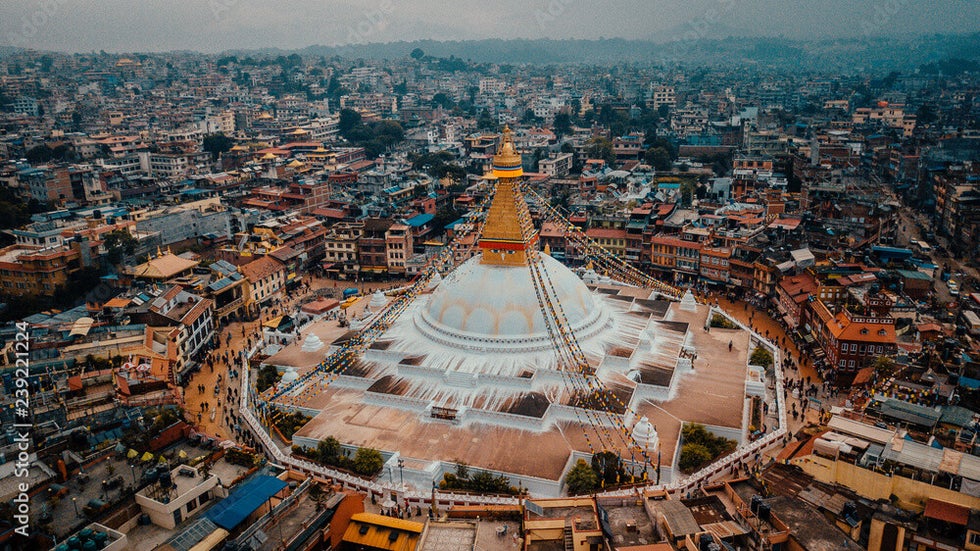
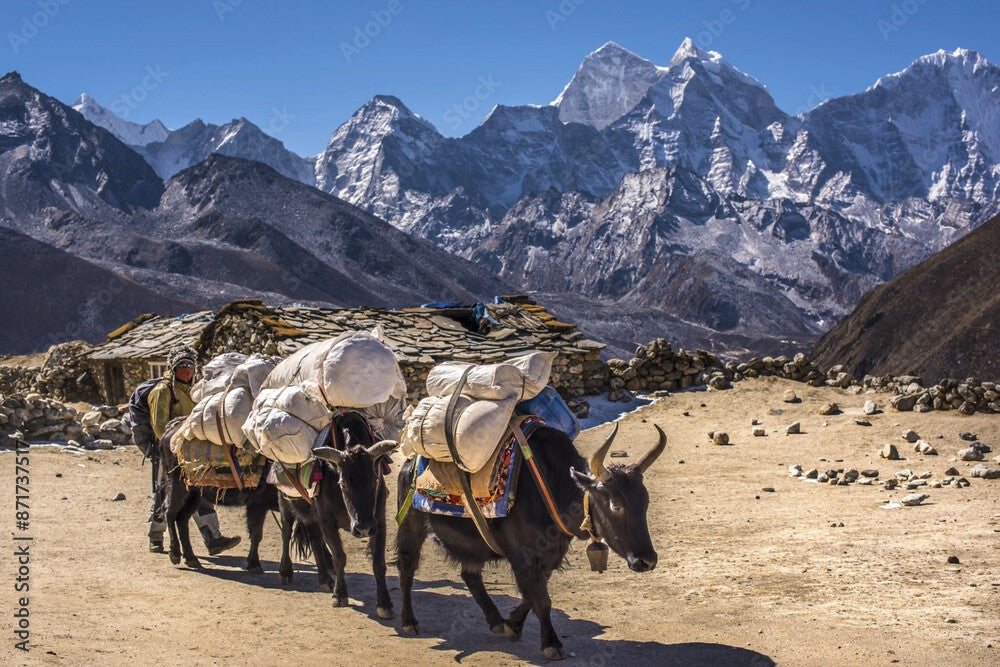
"Celebrating the soul of Nepal through its people, places, and stories."
"Namaste! Welcome to Land of Living Culture Nepal. I created this site to share my love for Nepal’s beauty, people, and traditions.
About Our Website:
Land of Living Culture – NEPAL, a digital window into the vibrant soul of Nepal. Explore its breathtaking landscapes, ancient heritage, and diverse traditions passed down through generations. From majestic temples and mountain peaks to colorful festivals and daily rituals, this site celebrates the living culture that makes Nepal truly unique.
Discover the unity in diversity, the peace in spirituality, and the pride of a people deeply connected to their roots.
Faces of Tradition: The Colors That Speak
Radiating joy and tradition, this young girl represents the vibrant spirit of Nepal’s diverse ethnic communities. Her face is adorned with colorful ceremonial paint, worn during festivals and cultural performances that honor ancient customs. Each color, each pattern, tells a story—of identity, pride, celebration, and belonging. From the Himalayas to the hills, Nepal’s culture lives not just in places, but in the people and their beautifully preserved expressions of heritage.
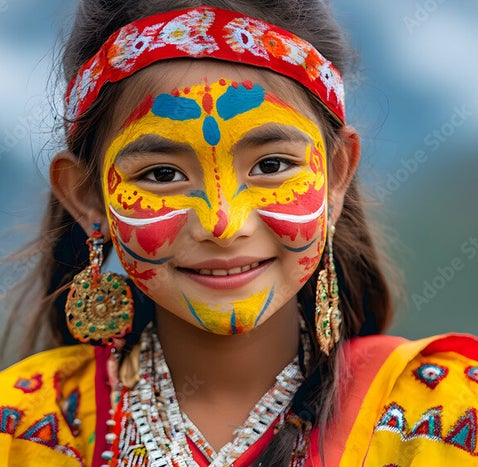
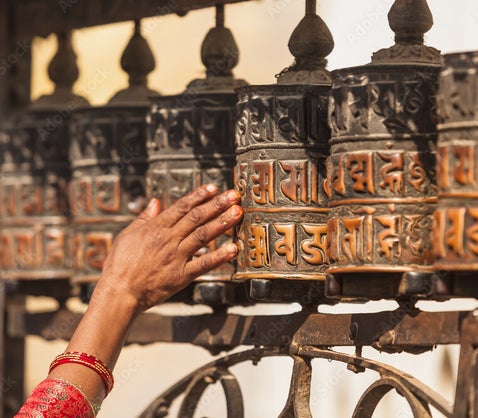
Sacred Whispers: The Prayer Wheels of Nepal
In the heart of Nepal’s sacred spaces, prayer wheels spin with the devotion of thousands. Inscribed with the mantra “Om Mani Padme Hum,” these wheels are turned by pilgrims as a way to spread blessings and accumulate merit. This ancient Buddhist practice is a living expression of spiritual harmony, passed down through generations. The gentle spin of each wheel symbolizes a powerful prayer in motion—echoing peace, compassion, and wisdom throughout the land.
Timeless Heritage Beneath Himalayan Skies
This breathtaking image captures a unique fusion of Nepal’s two greatest treasures—its ancient heritage and its majestic mountains. In the foreground stands Kathmandu Durbar Square, a UNESCO World Heritage Site, known for its intricately carved wooden temples, pagodas, and the statue of Kala Bhairava, the fierce protector deity.
Rising behind these sacred structures are the snow-capped peaks of the Himalayas, symbolizing Nepal’s natural grandeur. The scene reflects how Nepal’s culture and nature coexist in harmony, from the spiritual heart of its temples to the towering guardians of the mountains.
This is Nepal—a land where history touches the sky.
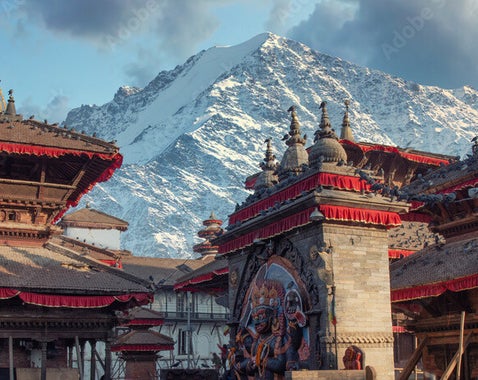

Mehendi: Sacred Symbols of Love and Prosperity
In Nepali weddings, Mehendi (Henna) is more than decoration—it’s a symbol of love, luck, and new beginnings.
It is believed that the darker the Mehendi, the deeper the love between the couple. The designs often hide the groom’s initials, making it part of a joyful wedding game.
Mehendi is also thought to bring blessings, protect the bride from evil spirits, and bring prosperity to her new life. Passed down for generations, this ritual connects beauty with tradition, making it a cherished part of every Nepali wedding.
"In Nepali weddings, Mehendi is not just design—it is a living tradition of love, luck, and new beginnings."
Dal Bhat: The Heart of Every Nepali Meal
Dal Bhat—steamed rice with lentil soup, veg-non-veg curry, yogurt and crispy papad—is the staple food of Nepal. It represents everyday nourishment and hospitality. Simple yet rich in flavor, this traditional meal is enjoyed in every home across the country, from the Himalayas to the Terai.
“A Taste of Nepal: Traditional Flavors That Tell a Story”
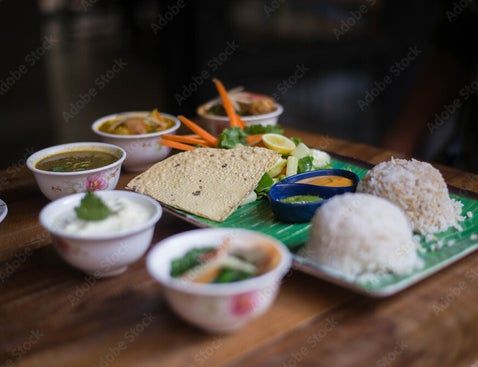
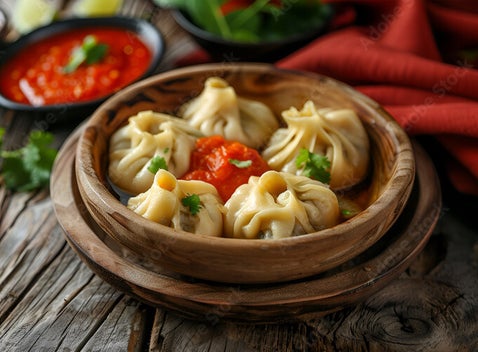
Momo: Nepal’s Favorite Dumpling Delight
Have you ever tried Nepali Momo: If not go and try now!
Soft, juicy, and filled with spices, Momo is one of Nepal’s most loved dishes. Served hot with spicy chutney, these steamed dumplings are a perfect blend of Tibetan influence and Nepali taste. Whether enjoyed on the streets or at home, Momo is a comfort food that brings people together.
Kumari: The Living Goddess of Nepal
In the heart of Kathmandu, a young girl becomes the Kumari—Nepal’s Living Goddess. She is worshipped as the human embodiment of the goddess Taleju, representing power, purity, and protection.
Chosen through ancient rituals, the Kumari lives a life of devotion, appearing at festivals like Indra Jatra, where thousands gather to see her. Her silent gaze is believed to bless devotees and protect the nation. This rare tradition is found only in Nepal, where living culture meets sacred belief.
"Kumari: The living goddess who carries centuries of Nepalese tradition."

Pride of Tradition: The Dhaka Topi & Daura Suruwal
Wearing the Dhaka topi and Daura Suruwal represents Nepali cultural pride and identity. Often worn during festivals, ceremonies, and national events, this dress symbolizes unity and respect for heritage. The garland (mala) adds a touch of honor and celebration, marking special occasions and blessings.
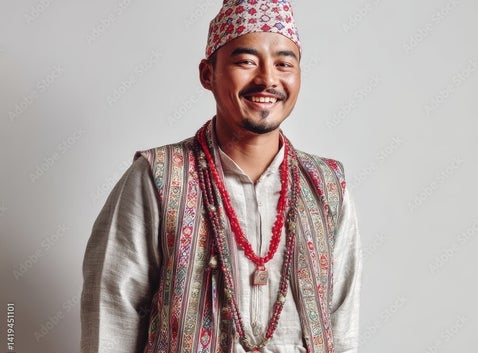
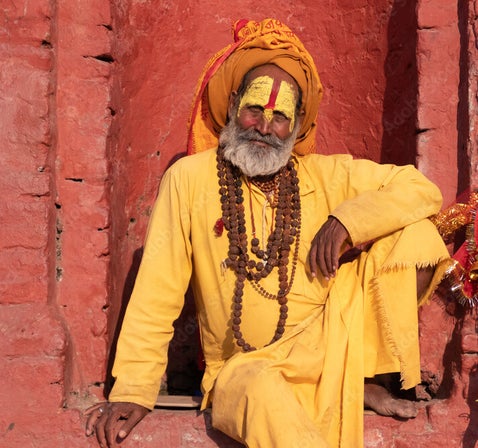
Sadhus: The Wandering mystics of Nepal
Draped in yellow robes, with long hair and malas, Sadhus—also known as Jogi Babas or Naga Babas—are Hindu holy men who dedicate their lives to spiritual practice. They renounce material life, meditate, and live in sacred places like temples and riverbanks. In Nepal, Sadhus are often seen during religious festivals, especially at Pashupatinath Temple, symbolizing faith, simplicity, and devotion. Sadhus in Pashupatinath symbolize renunciation, devotion to Shiva, and a detachment from worldly pleasures
"Faces of Faith and Culture: Nepal’s Living Traditions"
Nepal: A Tapestry of Regions and Cultures
This colorful map of Nepal highlights the country’s rich geographic and cultural diversity—from the icy peaks of the Himalayas in the north, to the lush hills and the fertile plains of the Terai in the south. Each region tells its own story, with unique languages, traditions, and ways of life.
Nepal may be small on the map, but its diversity is vast, woven together like a vibrant tapestry of nature, people, and culture.
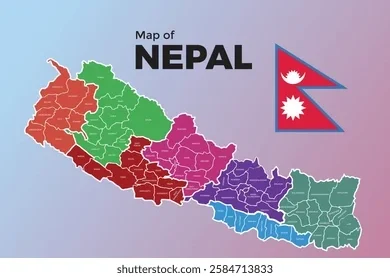
Nepal’s Flag: Pride Beneath the Himalayas
The flag of Nepal is unlike any in the world—its two triangular shapes represent not only the towering Himalayas but also the nation’s deep-rooted spirituality, symbolized by the sun and moon. These celestial symbols reflect Nepal’s belief that, like the mountains and the skies, the country’s spirit will stand tall and endure forever.
The crimson red tells the story of bravery and sacrifice, while the blue border embraces the values of peace and harmony.
Beneath the shadow of the world’s highest peaks, this flag is more than a symbol—it is Nepal’s living promise to remain resilient, unique, and timeless.
Prithvi Narayan Shah: The Architect of a Nation
“Nepal is a garden of 4 castes and 36 clans.”
This image honors Prithvi Narayan Shah, the visionary king who laid the foundation of modern Nepal in the 18th century. Through courage, strategic wisdom, and unwavering determination, he unified the many small kingdoms and principalities into one sovereign nation. Prithvi Narayan Shah saw Nepal as a beautiful, diverse garden where every culture and community blossoms together in harmony. His legacy symbolizes strength, unity, and the enduring spirit of Nepalese identity. Just as he brought diverse lands together, Nepal today continues to thrive as a land of rich culture, vibrant traditions, and breathtaking natural beauty — truly a land of living heritage.
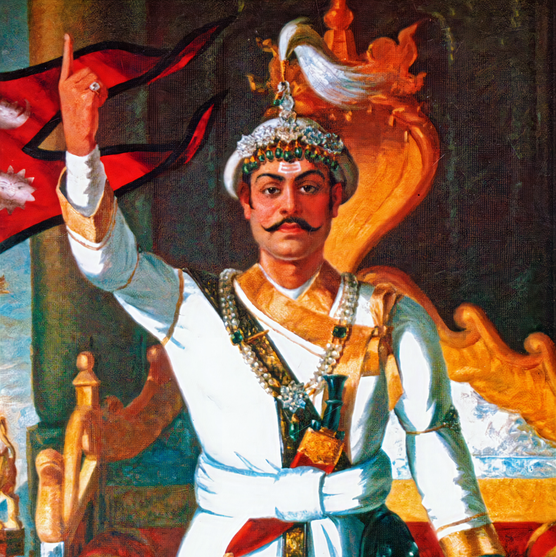
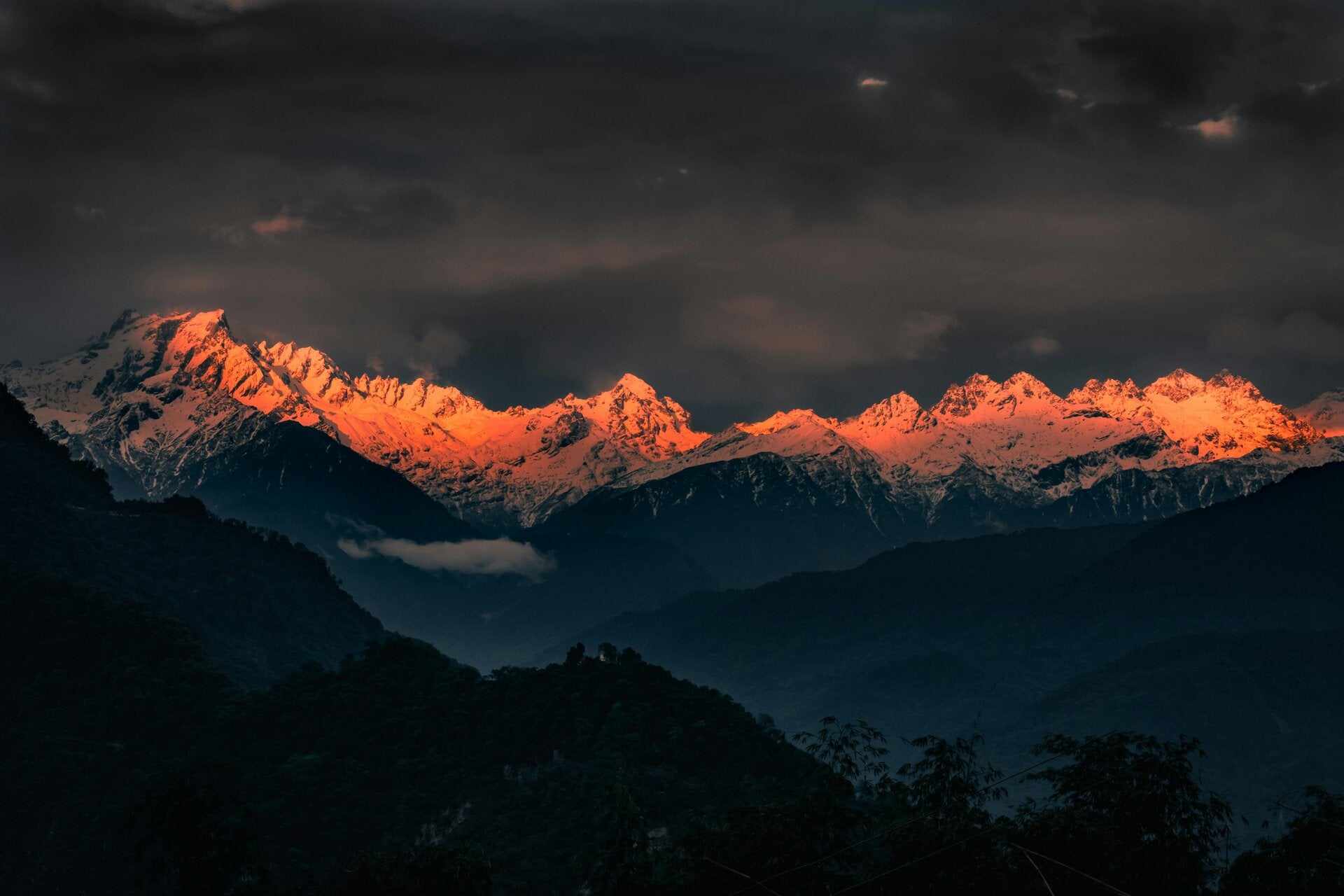
Nepal- Our Pride; Our Life
"Hence, we tried to collaborate all the pictures and description on how Nepal is diverse in nature, tradition, culture and beliefs. We hereby, feel proud of how profound our nation is. Nepal, never forfeited in any war, Nalapani is still our brave history. We still remember our kings and queen who made our country more peaceful and respectful in this whole universe. We want to remember our ancestors who paved a path to greater Nepal with prosperity for us to live with Happiness".
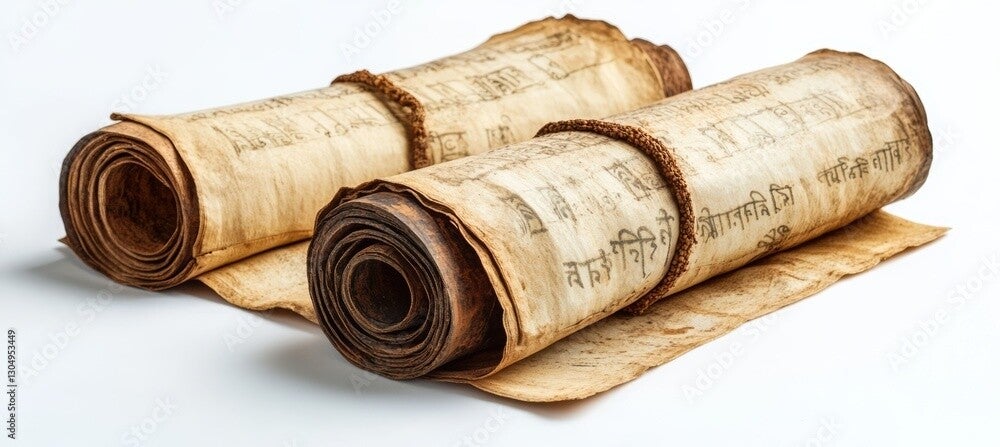
Contact
224B Broadway Reservoir
3073 Melbourne
Opening Hours
Mon - Fri: 9am - 5pm
Saturday: 10am - 3pm
Sunday: Closed
Contact
+61 490 015 519
acharyak549@gmail.com
Socials

Create Your Own Website With Webador